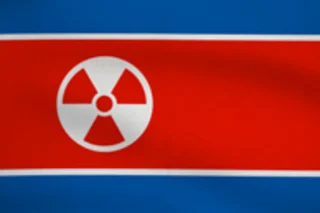When North Korea announced on May 25th that it had conducted its second underground test of a nuclear weapon, scientists weren't surprised: They had already picked up seismic readings indicating a subterranean explosion. While seismologists say the readings carried subtle signatures that strongly suggest that the blast was caused by a nuclear device rather than conventional explosives, scientists were still waiting for one more piece of evidence--
detecting radionuclide evidence in the form of radioactive gas is the "smoking gun". And the big news here is that they have not found that signal [BBC Two].
Unlike other nuclear debris, xenon, an unreactive noble gas, can filter out through fissures in the rock after an underground test. Once in the atmosphere, plumes of xenon isotopes can be blown for thousands of miles. In 2006, for example, a [nuclear monitoring] station in Yellowknife, Canada, detected traces of xenon-133 two weeks after North ...














